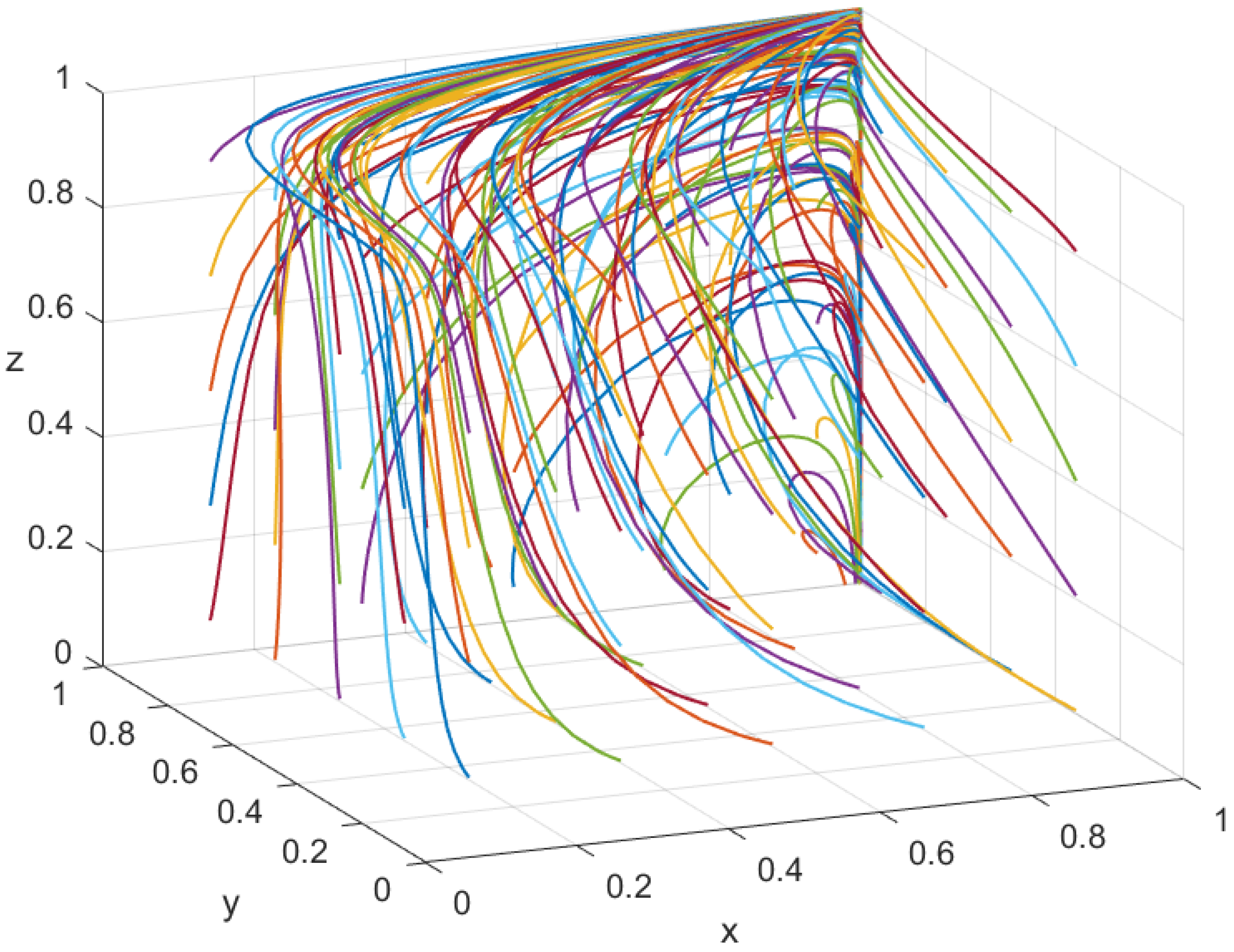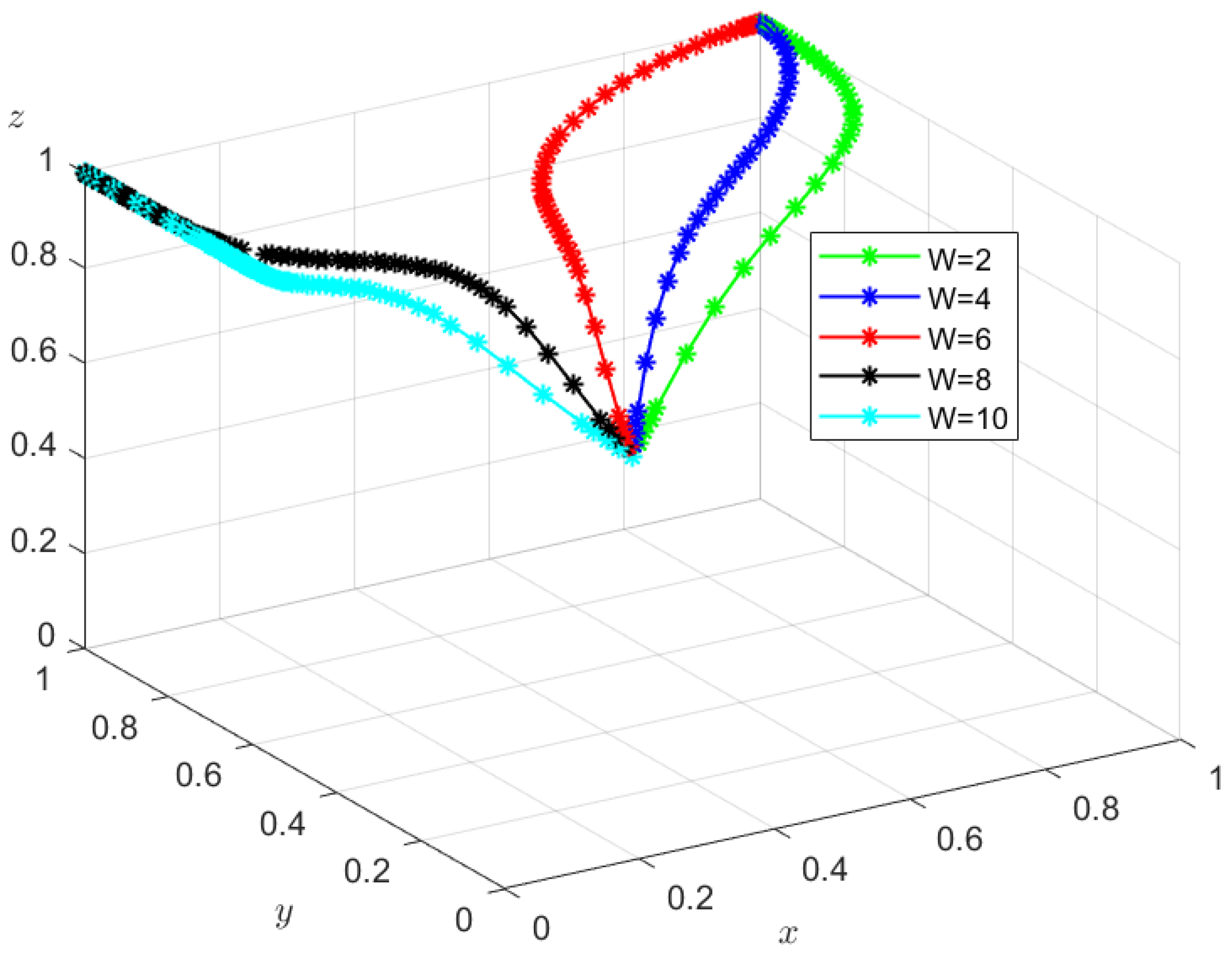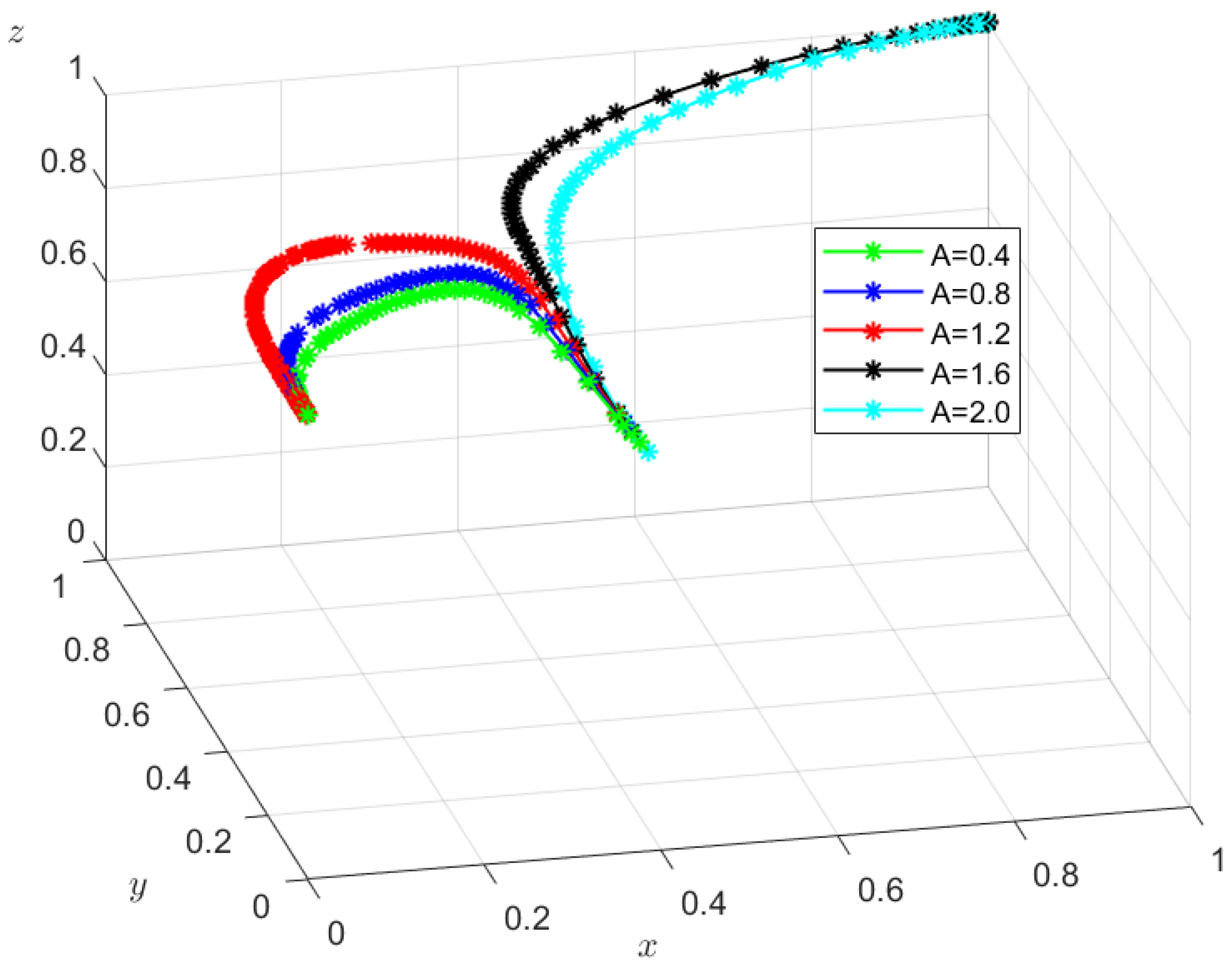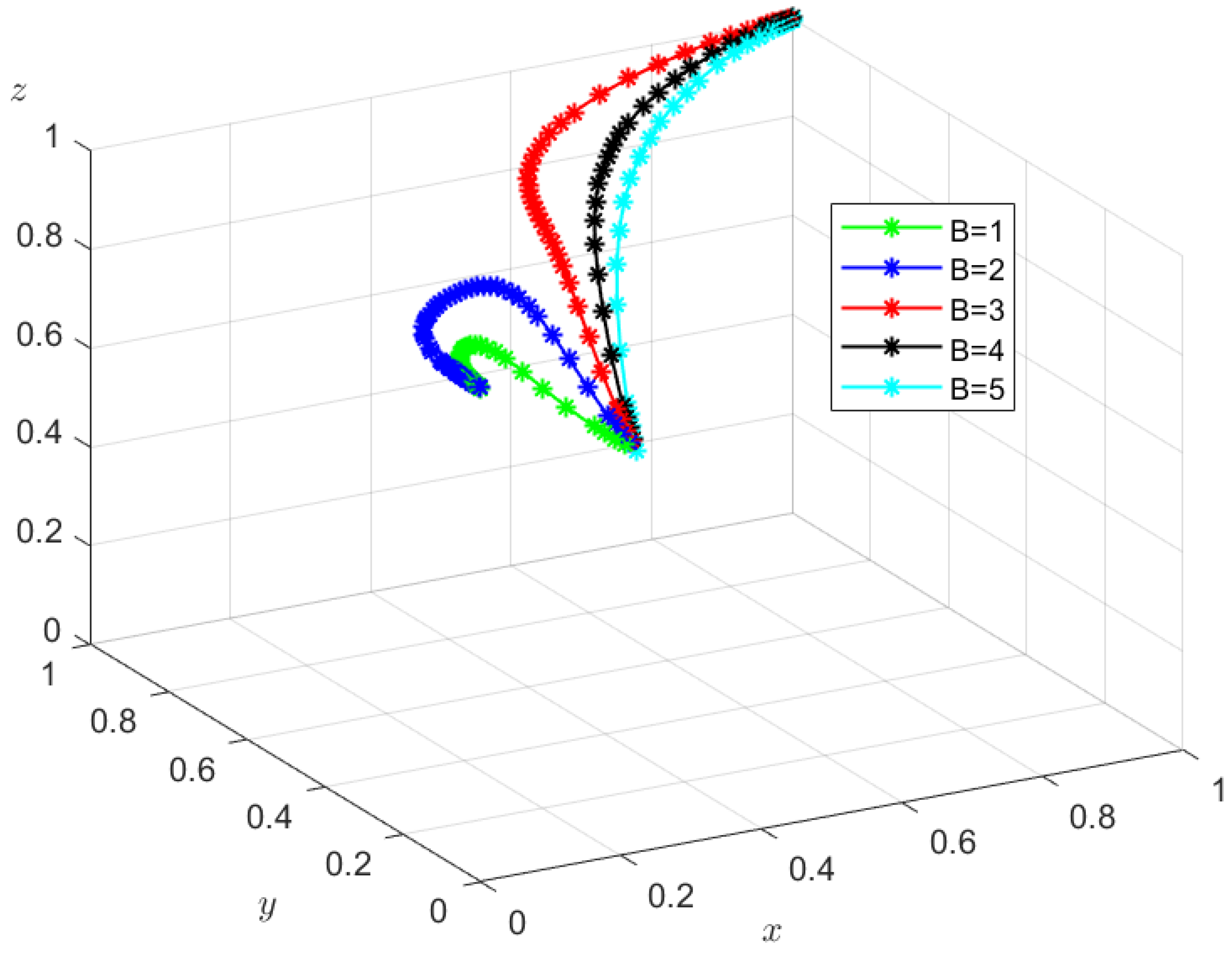Evolutionary Game Analysis of New Energy Transition Among Government, Traditional Automobile Enterprises, and Research Institutions Under the Dual Carbon Goals
Abstract
1. Introduction
2. Literature Review
2.1. The Significance of High-Quality Development of the NEV Industry Under the Dual Carbon Goals
2.2. Challenges Faced by the NEV Industry Under the Dual Carbon Goals
- (1)
- Insufficient Technological Innovation: The technological innovation of the NEV industry is still insufficient, especially in battery technology, charging technology, and other areas that require further breakthroughs. Currently, NEVs face bottlenecks in battery endurance, charging speed, and safety, which restrict their popularization and application [27,28].
- (2)
- Lagging Infrastructure Construction: NEVs require a large number of charging facilities and after-sales service networks, but the current infrastructure construction lags behind, hindering the industry’s development. Insufficient charging facilities and uneven distribution lead to issues such as charging difficulties and range anxiety for NEV users [29].
- (3)
- Low Market Acceptance: The prices of NEVs are relatively high, and consumer awareness and acceptance of these products are still relatively low. Despite government policies such as purchase subsidies and tax incentives for NEVs, consumers still have concerns about the performance, reliability, and resale value of NEVs [30,31].
- (4)
- Inadequate Policy Support: Although the government has issued a series of policies to support the development of the NEV industry, the level of policy support is still insufficient, and the policy system needs further improvement. For example, issues such as the reduction in purchase subsidies and inadequate funding support for charging facility construction hinder the development of the NEV industry [32,33].
2.3. Roles of Governments, Traditional Automobile Firms, and Research Institutions in the Transition to NEVs
- (1)
- Role of Governments
- (2)
- Role of Traditional Automobile Firms
- (3)
- Role of Research Institutions
2.4. Application of Evolutionary Game Analysis in the Transition to NEVs
3. Materials and Methods
3.1. Model Variables and Hypotheses
3.2. Model Construction
3.3. Model Analysis
3.4. Stability Analysis of Equilibrium Points in Evolutionary Game Systems
4. Numerical Simulation
4.1. Sensitivity Analysis of Evolutionarily Stable Strategies for Governments, Traditional Automotive Enterprises, and Scientific Research Institutions
4.2. Sensitivity Analysis of Tripartite Evolutionarily Stability in the Process of New Energy Transformation
4.3. Sensitivity Analysis of Research and Development Costs (W) of Research Institutes on Their Strategic Choices in the Process of New Energy Transformation
4.4. Sensitivity Analysis of the Impact of Rewards (A) and Penalties (B) on the Strategic Choices of Traditional Automobile Enterprises
4.5. Sensitivity Analysis of Changes in Government Support Costs on Government Strategic Choices in the Process of New Energy Transformation
5. Discussion
5.1. Multidimensional Considerations of Government Roles
5.2. Synergistic Mechanism Between Scientific Research Institutions and Traditional Automotive Enterprises
5.3. Strategic Adjustments in Complex Dynamic Environments
6. Conclusions, Suggestions, Limitations, and Future Research Directions
6.1. Conclusions
- (1)
- When S > G + T + 2A, i.e., when the government’s support benefits exceed the sum of support costs, non-support benefits, and rewards to other entities, the government tends to provide support. The system evolves and adjusts, ultimately leading to an ideal state of government support with collaboration between traditional automotive enterprises and scientific research institutions.
- (2)
- The cooperation between scientific research institutions and traditional automotive enterprises is primarily influenced by research and development (R&D) costs and reward and punishment mechanisms. Reducing R&D costs, increasing reward incentives, or implementing stricter punishment measures can facilitate collaboration between the two parties. Furthermore, under the same intensity, rewards have a more pronounced incentive effect on traditional automotive enterprises choosing cooperation strategies compared to the constraining effect of punishments.
- (3)
- Appropriate government support costs are a crucial factor in shaping the government’s support strategy. The system demonstrates self-adjustment and continuous evolution characteristics in a complex dynamic environment, ultimately converging to a stable state.
6.2. Suggestions
- (1)
- Optimize government support mechanisms: Governments should comprehensively consider economic, social, and environmental benefits to formulate scientific and reasonable support policies. Meanwhile, they should explore diversified financing channels to reduce support costs and improve policy implementation efficiency.
- (2)
- Build an effective synergistic mechanism: Governments should establish reasonable mechanisms for cost sharing, benefit sharing, and risk sharing to form stable cooperative relationships. They should promote in-depth synergy between scientific research institutions and traditional automotive enterprises by signing long-term cooperation agreements and establishing joint research and development funds.
- (3)
- Improve incentive and restraint mechanisms: Governments should design reasonable reward and penalty mechanisms to incentivize scientific research institutions and traditional automotive enterprises to actively participate in the renewable energy transition while effectively constraining default behaviors. Additionally, they should strengthen policy promotion and guidance to enhance awareness and enthusiasm for the renewable energy transition among all parties.
- (4)
- Enhance system adaptability: When formulating policies, attention should be paid to policy flexibility and adaptability to adjust strategies promptly in response to environmental changes. Meanwhile, governments should strengthen policy evaluation and feedback mechanisms to promptly identify and address issues.
6.3. Limitations
- (1)
- Parameter settings: The parameter values in this study are only used for theoretical analysis and do not directly correspond to specific values in the real economic and social environment. Therefore, in practical applications, parameters need to be appropriately adjusted according to specific circumstances.
- (2)
- Model simplification: To simplify analysis, this study abstracts and generalizes real-world situations to a certain extent. For example, external factors such as technological progress and changes in market demand are not considered in the model. This may result in a certain deviation between model results and actual situations.
- (3)
- Data acquisition: As the transition to renewable energy is an emerging field, relevant data are relatively scarce. This study uses hypothetical parameter values in numerical simulations, which limits the accuracy and reliability of the research results to some extent.
6.4. Future Research Directions
- (1)
- Parameter optimization and validation: Future research can collect more actual data to estimate and validate the parameters in the model more accurately. Meanwhile, researchers can consider incorporating external factors such as technological progress and changes in market demand into the model to improve its accuracy and practicality.
- (2)
- Multi-agent interaction research: Beyond governments, scientific research institutions, and traditional automotive enterprises, the transition to renewable energy also involves consumers, financial institutions, environmental protection organizations, and other agents. Future research can further explore the interaction relationships among these agents and their impact on the renewable energy transition.
- (3)
- Policy effect evaluation: Future research can adopt a combination of quantitative and qualitative analysis methods to comprehensively evaluate policy effects. Researchers can assess the driving role of policies in the renewable energy transition and their economic, social, and environmental benefits by constructing indicator systems, collecting data, and establishing models.
- (4)
- Interdisciplinary research: The transition to renewable energy is a complex issue involving multiple disciplines. Future research can integrate knowledge and methods from economics, management, environmental science, engineering technology, and other disciplines to conduct interdisciplinary research, providing more comprehensive and in-depth theoretical support and practical guidance for the renewable energy transition.
Author Contributions
Funding
Data Availability Statement
Conflicts of Interest
References
- Li, T.; Ma, L.; Liu, Z.; Yi, C.; Liang, K. Dual carbon goal-based quadrilateral evolutionary game: Study on the new energy vehicle industry in China. Int. J. Environ. Res. Public Health 2023, 20, 3217. [Google Scholar] [CrossRef] [PubMed]
- Fu, S.; Liu, D.; Huang, F. Synergistic effect of government policy and market mechanism on the innovation of new energy vehicle enterprises. Energy 2024, 295, 130998. [Google Scholar] [CrossRef]
- Dall-Orsoletta, A.; Ferreira, P.; Dranka, G.G. Low-carbon technologies and just energy transition: Prospects for electric vehicles. Energy Convers. Manag. X 2022, 16, 100271. [Google Scholar] [CrossRef]
- Naor, M.; Bernardes, E.S.; Druehl, C.T.; Shiftan, Y. Overcoming barriers to adoption of environmentally-friendly innovations through design and strategy: Learning from the failure of an electric vehicle infrastructure firm. Int. J. Oper. Prod. Manag. 2015, 35, 26–59. [Google Scholar] [CrossRef]
- Kanger, L.; Geels, F.W.; Sovacool, B.; Schot, J. Technological diffusion as a process of societal embedding: Lessons from historical automobile transitions for future electric mobility. Transp. Res. Part D Transp. Environ. 2019, 71, 47–66. [Google Scholar] [CrossRef]
- Fredriksson, G.; Roth, A.; Tagliapietra, S.; Veugelers, R. Is the European automotive industry ready for the global electric vehicle revolution? Bruegel Policy Contrib. 2018, 26, 1–21. [Google Scholar]
- Dakić, P.; Stupavský, I.; Todorović, V. The Effects of Global Market Changes on Automotive Manufacturing and Embedded Software. Sustainability 2024, 16, 4926. [Google Scholar] [CrossRef]
- Coelho, M.C.; Torrão, G.; Emami, N. Nanotechnology in automotive industry: Research strategy and trends for the future—Small objects, big impacts. J. Nanosci. Nanotechnol. 2012, 12, 6621–6630. [Google Scholar] [CrossRef]
- Miller, R. Global R & D networks and large-scale innovations: The case of the automobile industry. Res. Policy 1994, 23, 27–46. [Google Scholar]
- Wu, Z.; He, Q.; Li, J.; Bi, G.; Antwi-Afari, M.F. Public attitudes and sentiments towards new energy vehicles in China: A text mining approach. Renew. Sustain. Energy Rev. 2023, 178, 113242. [Google Scholar] [CrossRef]
- Chen, D.; Wang, G.; Yuan, Z.; Zhang, E. Study on the Spatial Pattern and Influencing Factors of China’s New Energy Vehicle Industry—Based on Data of Relevant Listed Companies from 2008–2021. Sustainability 2023, 15, 3058. [Google Scholar] [CrossRef]
- Du, Y.; Guo, Z.; Bao, H. Smooth sailing ahead? Policy options for China’s new energy vehicle industry in the post-subsidy era. Energy Res. Soc. Sci. 2024, 107, 103359. [Google Scholar] [CrossRef]
- Bohnsack, R.; Pinkse, J.; Kolk, A. Business models for sustainable technologies: Exploring business model evolution in the case of electric vehicles. Res. Policy 2014, 43, 284–300. [Google Scholar] [CrossRef]
- Dwivedi, Y.K.; Hughes, L.; Ismagilova, E.; Aarts, G.; Coombs, C.; Crick, T.; Duan, Y.; Dwivedi, R.; Edwards, J.; Eirug, A.; et al. Artificial Intelligence (AI): Multidisciplinary perspectives on emerging challenges, opportunities, and agenda for research, practice and policy. Int. J. Inf. Manag. 2021, 57, 101994. [Google Scholar] [CrossRef]
- Pan, J.; Chen, X.; Luo, X.; Zeng, X.; Liu, Z.; Lai, W.; Xu, Y.; Lu, C. Analysis of the impact of China’s energy industry on social development from the perspective of low-carbon policy. Energy Rep. 2022, 8, 14–27. [Google Scholar] [CrossRef]
- Wang, C.; Engels, A.; Wang, Z. Overview of research on China’s transition to low-carbon development: The role of cities, technologies, industries and the energy system. Renew. Sustain. Energy Rev. 2018, 81, 1350–1364. [Google Scholar] [CrossRef]
- Woon, K.S.; Phuang, Z.X.; Taler, J.; Varbanov, P.S.; Chong, C.T.; Klemeš, J.J.; Lee, C.T. Recent advances in urban green energy development towards carbon emissions neutrality. Energy 2023, 267, 126502. [Google Scholar] [CrossRef]
- Wang, J.; He, Y.Q.; Wang, H.G.; Wu, R.F. Low-carbon promotion of new energy vehicles: A quadrilateral evolutionary game. Renew. Sustain. Energy Rev. 2023, 188, 113795. [Google Scholar] [CrossRef]
- Su, C.W.; Yuan, X.; Tao, R.; Umar, M. Can new energy vehicles help to achieve carbon neutrality targets? J. Environ. Manag. 2021, 297, 113348. [Google Scholar] [CrossRef]
- Wang, X.; Zhao, W.; Ruet, J. Specialised vertical integration: The value-chain strategy of EV lithium-ion battery firms in China. Int. J. Automot. Technol. Manag. 2022, 22, 178–201. [Google Scholar] [CrossRef]
- Heupel, T.; Congying, Z. How industry 4.0 inspires Chinese automotive companies in the context of made in China 2025. In German and Chinese Contributions to Digitalization: Opportunities, Challenges, and Impacts; Springer: Wiesbaden, Germany, 2020; pp. 49–73. [Google Scholar]
- Yu, H.; Dai, H.; Tian, G.; Xie, Y.; Wu, B.; Zhu, Y.; Li, H.; Wu, H. Big-data-based power battery recycling for new energy vehicles: Information sharing platform and intelligent transportation optimization. IEEE Access 2020, 8, 99605–99623. [Google Scholar] [CrossRef]
- Zahoor, A.; Yu, Y.; Zhang, H.; Nihed, B.; Afrane, S.; Peng, S.; Sápi, A.; Lin, C.J.; Mao, G. Can the new energy vehicles (NEVs) and power battery industry help China to meet the carbon neutrality goal before 2060? J. Environ. Manag. 2023, 336, 117663. [Google Scholar] [CrossRef]
- Liu, Z.; Liu, X.; Zhao, F. Research on NEV platform development strategies for automotive companies. World Electr. Veh. J. 2021, 12, 201. [Google Scholar] [CrossRef]
- Llopis-Albert, C.; Rubio, F.; Valero, F. Impact of digital transformation on the automotive industry. Technol. Forecast. Soc. Chang. 2021, 162, 120343. [Google Scholar] [CrossRef]
- Liu, X.; Liu, W.; Xie, Y.; Lai, G. The role of government in the innovation ecology of high-tech industries: A case study of China’s new energy vehicle industry. Int. J. Technol. Policy Manag. 2023, 23, 123–147. [Google Scholar] [CrossRef]
- Liu, Z.; Hao, H.; Cheng, X.; Zhao, F. Critical issues of energy efficient and new energy vehicles development in China. Energy Policy 2018, 115, 92–97. [Google Scholar] [CrossRef]
- Yang, T.; Xing, C.; Li, X. Evaluation and analysis of new-energy vehicle industry policies in the context of technical innovation in China. J. Clean. Prod. 2021, 281, 125126. [Google Scholar] [CrossRef]
- Gong, H.; Wang, M.Q.; Wang, H. New energy vehicles in China: Policies, demonstration, and progress. Mitig. Adapt. Strateg. Glob. Change 2013, 18, 207–228. [Google Scholar] [CrossRef]
- Wang, R.; Zhao, X.; Wang, W.; Jiang, L. What factors affect the public acceptance of new energy vehicles in underdeveloped regions? A case study of Gansu Province, China. J. Clean. Prod. 2021, 318, 128432. [Google Scholar] [CrossRef]
- Liu, J.; Zhang, N.; Yang, Y. Acceptance model of new energy vehicles based on PLS-SEM model. Heliyon 2024, 10, e30350. [Google Scholar] [CrossRef]
- Ma, S.C.; Fan, Y.; Feng, L. An evaluation of government incentives for new energy vehicles in China focusing on vehicle purchasing restrictions. Energy Policy 2017, 110, 609–618. [Google Scholar] [CrossRef]
- Wang, Z.; Zhao, C.; Yin, J.; Zhang, B. Purchasing intentions of Chinese citizens on new energy vehicles: How should one respond to current preferential policy? J. Clean. Prod. 2017, 161, 1000–1010. [Google Scholar] [CrossRef]
- Yu, F.; Wang, L.; Li, X. The effects of government subsidies on new energy vehicle enterprises: The moderating role of intelligent transformation. Energy Policy 2020, 141, 111463. [Google Scholar] [CrossRef]
- Skivington, K.; Matthews, L.; Simpson, S.A.; Craig, P.; Baird, J.; Blazeby, J.M.; Boyd, K.A.; Craig, N.; French, D.P.; McIntosh, E.; et al. A new framework for developing and evaluating complex interventions: Update of Medical Research Council guidance. BMJ 2021, 374, n2061. [Google Scholar] [CrossRef]
- Jiang, Z.; Xu, C. Policy incentives, government subsidies, and technological innovation in new energy vehicle enterprises: Evidence from China. Energy Policy 2023, 177, 113527. [Google Scholar] [CrossRef]
- Bhatti, G.; Mohan, H.; Singh, R.R. Towards the future of smart electric vehicles: Digital twin technology. Renew. Sustain. Energy Rev. 2021, 141, 110801. [Google Scholar] [CrossRef]
- Herczeg, G.; Akkerman, R.; Hauschild, M.Z. Supply chain collaboration in industrial symbiosis networks. J. Clean. Prod. 2018, 171, 1058–1067. [Google Scholar] [CrossRef]
- Cao, X.; Li, C.; Li, J.; Li, Y. Modeling and simulation of knowledge creation and diffusion in an industry-university-research cooperative innovation network: A case study of China’s new energy vehicles. Scientometrics 2022, 127, 3935–3957. [Google Scholar] [CrossRef]
- Liu, J.; Pu, J.; Jiang, Z. Promoting strategy of new energy vehicles collaborative innovation: The case study of Yutong. Procedia Eng. 2017, 174, 1009–1015. [Google Scholar]
- Kimble, C.; Wang, H. China’s new energy vehicles: Value and innovation. J. Bus. Strategy 2013, 34, 13–20. [Google Scholar] [CrossRef]
- Wilson, J. A Quad Partnership to Secure Battery Value Chains; National Security College, Australian National University: Lennox Crossing, Australia, 2021. [Google Scholar]
- Nie, Q.; Zhang, L.; Tong, Z.; Hubacek, K. Strategies for applying carbon trading to the new energy vehicle market in China: An improved evolutionary game analysis for the bus industry. Energy 2022, 259, 124904. [Google Scholar] [CrossRef]
- Song, R.; Shi, W.; Qin, W.; Xue, X. Exploring the interplay of new energy vehicle enterprises, consumers, and government in the context of the” dual carbon” target: An evolutionary game and simulation analysis. PLoS ONE 2023, 18, e0291175. [Google Scholar] [CrossRef] [PubMed]
- Li, J.; Gao, L.; Tu, J. Evolutionary Game Analysis of Governments’ and Enterprises’ Carbon-Emission Reduction. Sustainability 2024, 16, 4216. [Google Scholar] [CrossRef]







| Parameters | Definitions |
|---|---|
| S | The benefit when the government chooses to support the strategy |
| T | The benefit when the government chooses not to support the strategy |
| A | The reward to the cooperating party when the government chooses to support the strategy |
| B | The penalty to the non-cooperating party when the government chooses to support the strategy |
| D | The general benefit of scientific research institutions |
| C | The general benefit of traditional automobile enterprises |
| N | The benefit from the outcome of new energy transformation |
| F | The proportion of the benefit obtained by scientific research institutions in the outcome benefit |
| W | The research and development cost incurred when scientific research institutions choose to cooperate |
| R | The operating cost incurred when traditional automobile enterprises choose to cooperate |
| G | The cost incurred when the government chooses to support the strategy |
| Government | Scientific Research Institution | |||
|---|---|---|---|---|
| Collaboration x | Non-Collaboration 1 − x | |||
| Traditional automobile enterprise | collaboration y | support z | ||
| non-support | ||||
| non-collaboration | support z | |||
| non-support | ||||
| Equilibrium Point | Eigenvalue | Symbol | Stability |
|---|---|---|---|
| saddle point | |||
| unstable point | |||
| unstable point | |||
| saddle point | |||
| when , the eigenvalue , and the point is a saddle point | |||
| when the eigenvalue is , and the point is a stable point | |||
| saddle point | |||
| saddle point | |||
| when , the eigenvalue is , and the point is stable point | |||
| when the eigenvalue is , and the point is a saddle point | |||
Disclaimer/Publisher’s Note: The statements, opinions and data contained in all publications are solely those of the individual author(s) and contributor(s) and not of MDPI and/or the editor(s). MDPI and/or the editor(s) disclaim responsibility for any injury to people or property resulting from any ideas, methods, instructions or products referred to in the content. |
© 2024 by the authors. Licensee MDPI, Basel, Switzerland. This article is an open access article distributed under the terms and conditions of the Creative Commons Attribution (CC BY) license (https://creativecommons.org/licenses/by/4.0/).
Share and Cite
Gao, J.; Tan, Q.; Cui, B. Evolutionary Game Analysis of New Energy Transition Among Government, Traditional Automobile Enterprises, and Research Institutions Under the Dual Carbon Goals. Energies 2024, 17, 6029. https://doi.org/10.3390/en17236029
Gao J, Tan Q, Cui B. Evolutionary Game Analysis of New Energy Transition Among Government, Traditional Automobile Enterprises, and Research Institutions Under the Dual Carbon Goals. Energies. 2024; 17(23):6029. https://doi.org/10.3390/en17236029
Chicago/Turabian StyleGao, Jie, Qingmei Tan, and Bo Cui. 2024. "Evolutionary Game Analysis of New Energy Transition Among Government, Traditional Automobile Enterprises, and Research Institutions Under the Dual Carbon Goals" Energies 17, no. 23: 6029. https://doi.org/10.3390/en17236029
APA StyleGao, J., Tan, Q., & Cui, B. (2024). Evolutionary Game Analysis of New Energy Transition Among Government, Traditional Automobile Enterprises, and Research Institutions Under the Dual Carbon Goals. Energies, 17(23), 6029. https://doi.org/10.3390/en17236029





